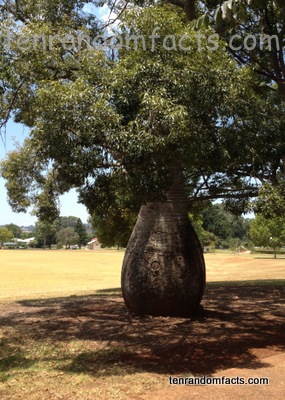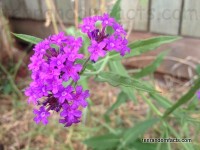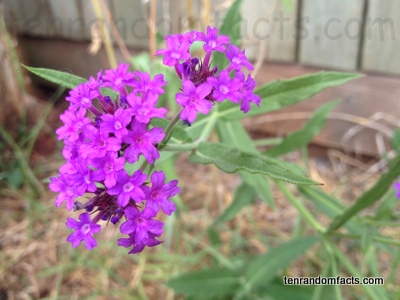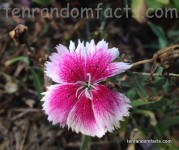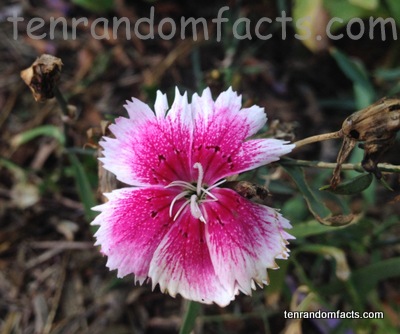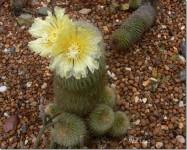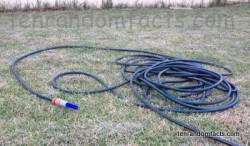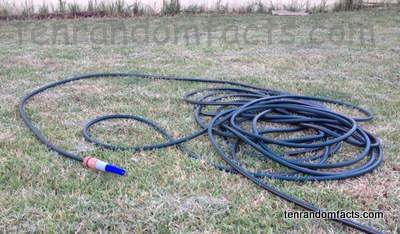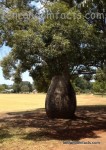
Bulging Queensland bottle trees.
- Queensland bottle trees are Australian native trees that have a trunk shaped like a bottle and have bell shaped, creamy-yellow coloured flowers that usually appear in spring and summer.
- The scientific name of a Queensland bottle tree is Brachychiton rupestris, and they are from the family Malvaceae, the family of mallows that includes hibiscus plants, but were originally from the archived family Sterculiaceae.
- Contrary to popular belief, Queensland bottle trees are not hollow, but have fibrous interiors, and are bottle-shaped due to the stored water in the trunk.
- Queensland bottle trees are usually grown from seed, and are popularly used in recreation areas and gardens, often providing good shade.
- Queensland bottle trees have been traditionally used as shelter, rope and food, particularly by indigenous Australians.
- Queensland bottle trees can range from 4 to 20 metres (13 to 65 feet) in height and do not produce a bottle shaped trunk until about five to eight years of age.
- Queensland bottle trees grow best in full sun and in temperatures of the sub-tropics and the tropics.
- Queensland bottle trees have boat-shaped seed pods full of many seeds that have hairs on them that can irritate the skin if touched.
- ‘Queensland bottle trees’ are also known as ‘Queensland-flaschenbaums’, ‘Narrowleaf bottle trees’, ‘Kurrajong bottle trees’ and ‘Kurrajongs’.
- Queensland bottle trees can survive up to three months out of soil, and they are therefore commonly transported to various countries, even as a mature tree.
Bibliography:
Brachychiton rupestris, 2013, Wikipedia, http://en.wikipedia.org/wiki/Brachychiton_rupestris
Campbell C, Fact Sheet: Bottle Trees, 2008, Gardening Australia, http://www.abc.net.au/gardening/stories/s2183287.htm
Cheung P, Brachychiton rupestris, 2013, AustraliaNationalBotanic Gardens, http://www.anbg.gov.au/gnp/interns-2005/brachychiton-rupestris.html




